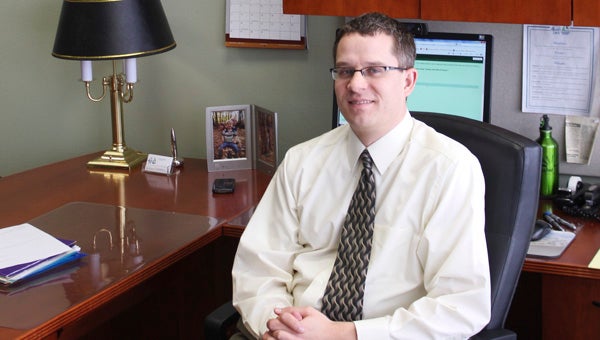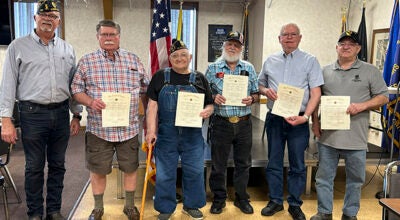Q & A with Chad Adams
Published 5:00 pm Wednesday, April 11, 2012
Editor’s note: Chad Adams began as the city manager in Albert Lea on June 1. In January, the Tribune’s Sarah Stultz interviewed him about some of the changes he has implemented.
Q: When you first started as city manager, were there any particular departments in the city that you identified as needing shaping?
A: I didn’t identify any particular department needing shaping but did recognize that the Fire Department needed some answers on their short-term and long-term staffing and department structure.
There were expectations that a vacated position would be replaced, but with ongoing budget constraints, that was not able to be delivered.
The consultant that we recently hired will help us find the best short- and long-term solutions to that and other department questions.
I would also add that cross-department-wise, I did recognize a need for more communication and collaboration between departments. There is strong communication and collaboration in most areas already existing to the staff’s credit, but there are a few areas that we can improve on.
Q: What kinds of training have you done with each department to help them figure out their strengths, weaknesses and how they can improve?
A: We conducted a SWOT (Strengths, Weaknesses, Opportunities and Threats) analysis over the summer in preparation for the retreat/goal-setting session with the City Council. Each department provided its results to the council during that session. The SWOT analysis
was utilized to establish goals for the next 18 months, as well.
We also conducted a LEAN (the acronym does not stand for anything in particular) training session this past fall with members of the management team (department heads and supervisors), which provided a hands-on demonstration of how we can improve our internal review, processing and approval of various day-to-days tasks. One of the core principles of the LEAN training is to provide us with a methodology to look at how we can improve our processes, with the ultimate result of providing better customer service to our residents. In most scenarios, we can also save significant time in processing various tasks. The LEAN methodology has been used recently to some varying degrees in five PIT (Process Improvement Team) crews that we created and also in our processing of special event permit applications.
Lastly, we are presently reading “The Trust Edge” by David Horsager as a department head group. Every two weeks we discuss a chapter from the book, and the conversation has been constructive on how we can improve ourselves not only professionally as a team and organization, but also personally as well.
Q: Did you follow a certain model that you have learned previously to conduct this training?
I have had experience and training with the SWOT analysis, LEAN methodology and more recently with the PIT crew concept that have all been utilized these last several months.
Q: Have the city staff been receptive to the changes?
A: I have received positive feedback to the SWOT analysis, retreat/goal setting session, PIT crews and the LEAN training session. The staff was very engaged, supportive, and active in all of those forums.
The staff has maintained an open mind about discussing and implementing measures that will improve our internal operations as well as customer service to our residents. Through the SWOT Analysis, for example, several department heads recognized areas that we could continue to improve on, either within their department, or cross-department, and were established as their goals.
Additionally, one of our PIT crews recommended that we need to do a better job of identifying ourselves in the workplace as a measure to improve customer service. As a result, we are preparing nametags for staff to display while working with the public.
I have also recognized that our staff has implemented a number of measures the past several years in lieu of budget challenges but also due to their simple desire to provide more efficient services at a high quality level to residents. We have very committed and dedicated employees who take pride in the services they provide to the community.
Q: What do you see as some of your biggest successes with the staff in the last six months?
A: I have been impressed by the open communication that we’ve been having, including constructive feedback/advice from each other through department head 360 performance reviews and in weekly department head meetings. The staff has demonstrated a willingness to continue learning and growing in their positions, for the betterment of the organization and community.
I’ve also seen our departments and staff work more collaboratively together on various tasks or projects understanding that we work best as a team and as one.
A specific example was the budget process, where all departments generated options on how to meet budget forecasts for the remainder of 2011 and into 2012. Various sacrifices had to be made and implemented.
The collaborative approach has also been replicated beyond the organization as well. I have seen us building relationships with community partners, such as the county, school district, watershed district and further utilizing each other’s strengths and resources to achieve our objectives or common goals.
Q: What further work with staff do you hope to do during the next year?
A: We will continue to read “The Trust Edge” these next several months and further discuss how we can implement some of the principles from the book into our day-to-day work with each other and the community. I will also continue encouraging adherence to our organizational value statements, which have been integrated into all employee performance reviews.
Later on this spring, we are working on scheduling sessions on one or more of the following possible topics: further developing the organization, teamwork, communication, collaboration and/or customer service.



